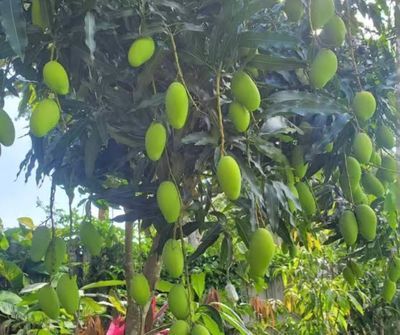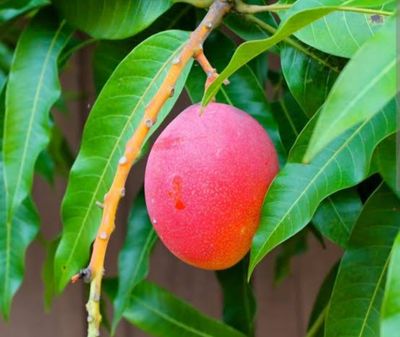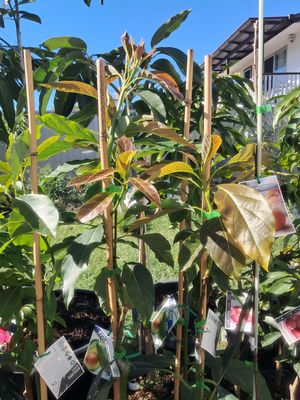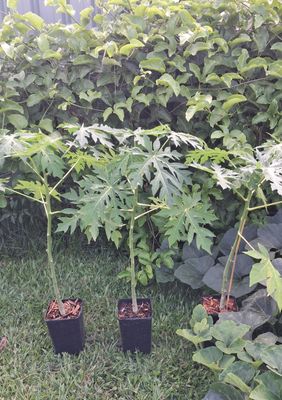The Kensington Pride Mango Fruit Description
- Size: The fruit typically weighs between 200 to 500 grams (7 to 17 ounces), with most being medium to large in size.
- Shape: The mango is usually oval to kidney-shaped and may have a slight curvature.
- Skin: The skin is smooth and starts off green, transitioning to a yellow or orange color as it ripens. It may exhibit a red or pink blush on one side when fully ripe.
- Flesh: The flesh is bright yellow, juicy, and virtually fiberless, making it easy to eat.
- Flavor: Known for its rich, sweet flavor with a hint of acidity, Kensington Pride mangoes are often described as having a tropical taste with subtle floral notes.
- Ripening: They generally ripen from late summer to early fall, depending on the climate and growing conditions.
Kensington Pride Mango Tree Description
- Size: The tree can grow to a height of 10 to 30 feet (3 to 9 meters) and can spread similarly wide.
- Leaves: The leaves are long, narrow, and glossy dark green, typically measuring 6 to 12 inches (15 to 30 cm) in length.
- Flowers: Produces small, fragrant flowers arranged in panicles. The flowers are usually yellow or white and attract pollinators like bees.
- Fruiting: The tree typically begins to bear fruit within 3 to 5 years of planting, depending on the care it receives and the environment.
- Climate: Kensington Pride mango trees thrive in tropical and subtropical climates. They prefer full sun and well-drained soils.
- Growth Habit: This variety can be quite vigorous and may require pruning to manage its size and shape.
Cultivation Tips
- Watering: The tree needs regular watering, particularly during dry spells, but should not be overwatered to avoid root rot.
- Fertilization: A balanced fertilizer can be applied during the growing season to promote healthy growth and fruit production.
- Pruning: Regular pruning helps maintain tree shape, encourages air circulation, and can enhance fruit quality.
Summary
The Kensington Pride mango is valued not only for its delicious fruit but also for its hardiness and adaptability in suitable climates. Its beautiful tree structure makes it a popular choice for both home gardens and commercial orchards, particularly in Australia, where it is one of the most common mango varieties grown.






